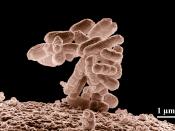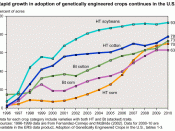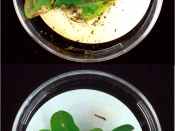GENES AND GENETIC ENGINEERING
Genetic engineering is the deliberate transfer of single genes between organisms. Genes are the stretches of DNA -- or occasionally RNA -- that carry information about the structure and function of all organisms.
Genetic engineering is changing medicine, agriculture and even the legal system. Genetic engineering is very clever and could be very useful. But it all seems to be happening much too fast and nobody knows what the effects of making and eating such living things will be. Many kinds of life could be damaged. Genetic engineering can be applied to organisms such as bacteria, animals and plants.
Farmers began primitive genetic engineering at the dawn of agriculture, when they kept seeds from their best plants, gradually improving the quality of successive generations. That practice accelerated early in the 20th century, when scientific plant breeders started using the principles of genetics to make plants with disease resistance, better structure or appearance, and higher yields.
Genetic engineers isolate the gene they want and insert it into a cell of the plant they want to transform. Then they grow that cell into a mature plant. If everything goes right, the offspring of that plant will contain the new gene. With correct breeding, so will all successive generations.
Simply by planting genetically engineered seeds, farmers are helping change the equation between weeds, insects, toxic agricultural chemicals and yields. Plants can be protected from all these things and an unlimited amount of crops can be produced. Fifteen years after the first gene was deliberately inserted into a plant, and just one year after their large-scale introduction, genetically engineered seeds are germinating on 65 million acres of prime farmland worldwide. As farmers are eagerly planting the new seeds, proponents say agricultural genetic engineering is an ecologically sound way to defend...


